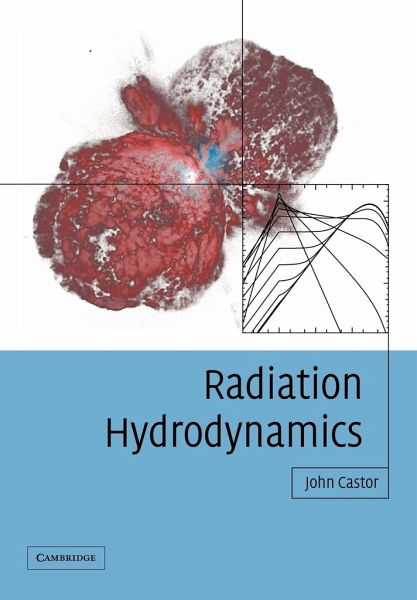
Radiation Hydrodynamics
Versandkostenfrei!
Versandfertig in 1-2 Wochen
66,99 €
inkl. MwSt.

PAYBACK Punkte
33 °P sammeln!
Introduction to the theory and the large-scale simulation methods currently used in radiation hydrodynamics.This broad treatment provides an accessible introduction to the theory and the large-scale simulation methods currently used in radiation hydrodynamics. Chapters cover all the central topics, including: a review of the fundamentals of gas dynamics; methods for computational fluid dynamics; theory of radiative transfer and of the dynamical coupling of matter and radiation; and quantum mechanics of matter-radiation interaction. Also covered are the details of spectral line formation out of...
Introduction to the theory and the large-scale simulation methods currently used in radiation hydrodynamics.
This broad treatment provides an accessible introduction to the theory and the large-scale simulation methods currently used in radiation hydrodynamics. Chapters cover all the central topics, including: a review of the fundamentals of gas dynamics; methods for computational fluid dynamics; theory of radiative transfer and of the dynamical coupling of matter and radiation; and quantum mechanics of matter-radiation interaction. Also covered are the details of spectral line formation out of thermodynamic equilibrium; the theory of refraction and transfer of polarized light and current computational methods for radiation transport, and a description of some notable applications of the theory in astrophysics and laboratory plasmas. This is a valuable text for research scientists and graduate students in physics and astrophysics.
Review quote:
'We are in very safe hands as the author takes us on a guided tour of this extensive subject matter. For a relatively compact book, Castor manages to present a surprising amount of material. This is a testament to Castor's writing style; although at times very formal, he manages to avoid dressing up his text in flowery rhetoric, and the prose comes across as refreshingly direct and honest. The book manages to summarize the key points in an easily-digested manner, yet at the same time avoids the mistake of trivializing or distorting the physics. I have no hesitation in recommending the book highly.' The Observatory
Table of contents:
List of figures; Preface; 1. Introduction; 2. A quick review of gas dynamics; 3. Numerical hydrodynamics; 4. Description of radiation; 5. Steady-state transfer; 6. The comoving-frame picture; 7. Hydrodynamics with radiation: waves and stability; 8. Radiation-matter interactions; 9. Spectral line transport; 10. Refraction and polarized light; 11. Numerical techniques for radiation transport; 12. Examples; References; Index.
This broad treatment provides an accessible introduction to the theory and the large-scale simulation methods currently used in radiation hydrodynamics. Chapters cover all the central topics, including: a review of the fundamentals of gas dynamics; methods for computational fluid dynamics; theory of radiative transfer and of the dynamical coupling of matter and radiation; and quantum mechanics of matter-radiation interaction. Also covered are the details of spectral line formation out of thermodynamic equilibrium; the theory of refraction and transfer of polarized light and current computational methods for radiation transport, and a description of some notable applications of the theory in astrophysics and laboratory plasmas. This is a valuable text for research scientists and graduate students in physics and astrophysics.
Review quote:
'We are in very safe hands as the author takes us on a guided tour of this extensive subject matter. For a relatively compact book, Castor manages to present a surprising amount of material. This is a testament to Castor's writing style; although at times very formal, he manages to avoid dressing up his text in flowery rhetoric, and the prose comes across as refreshingly direct and honest. The book manages to summarize the key points in an easily-digested manner, yet at the same time avoids the mistake of trivializing or distorting the physics. I have no hesitation in recommending the book highly.' The Observatory
Table of contents:
List of figures; Preface; 1. Introduction; 2. A quick review of gas dynamics; 3. Numerical hydrodynamics; 4. Description of radiation; 5. Steady-state transfer; 6. The comoving-frame picture; 7. Hydrodynamics with radiation: waves and stability; 8. Radiation-matter interactions; 9. Spectral line transport; 10. Refraction and polarized light; 11. Numerical techniques for radiation transport; 12. Examples; References; Index.




